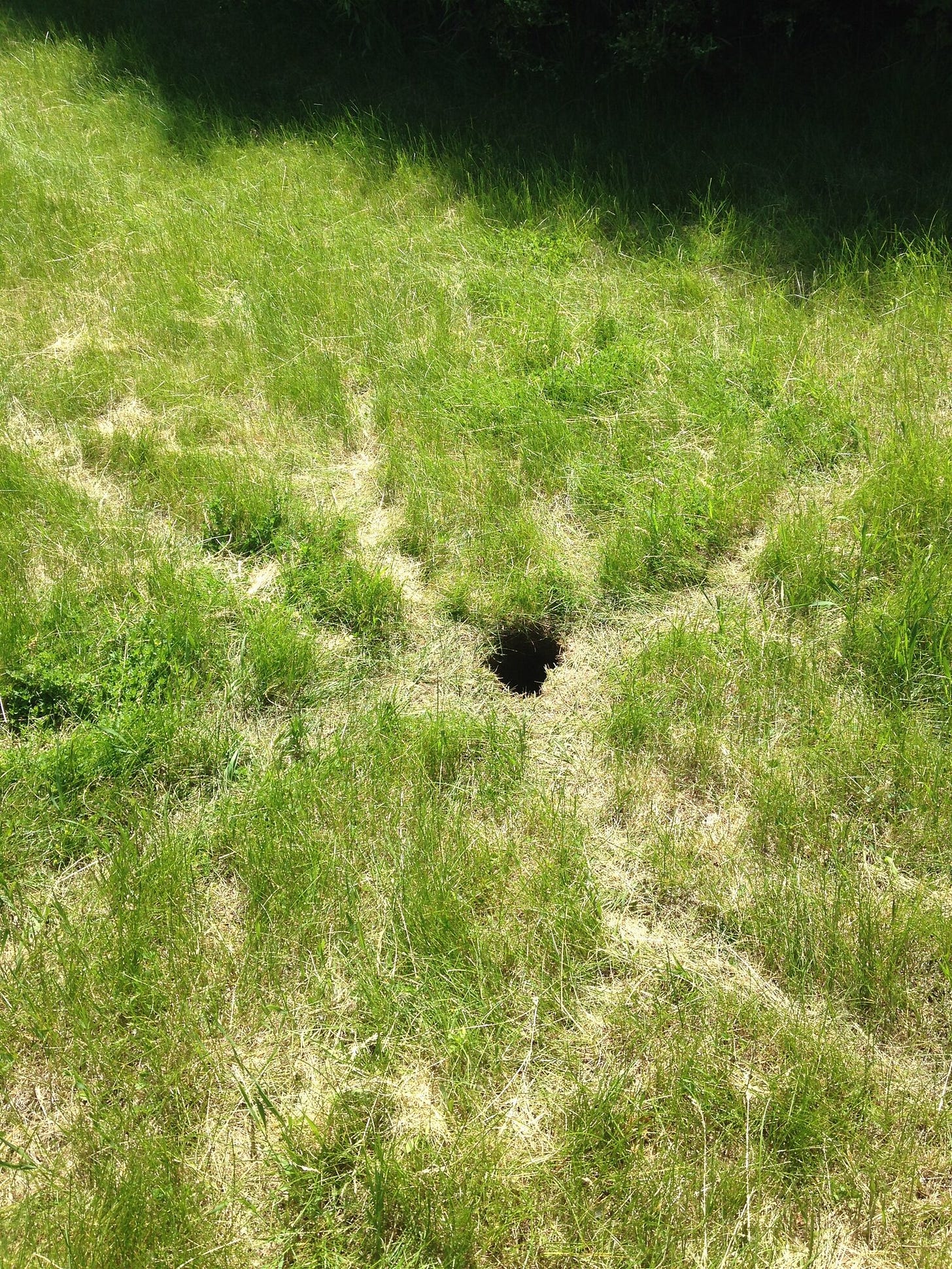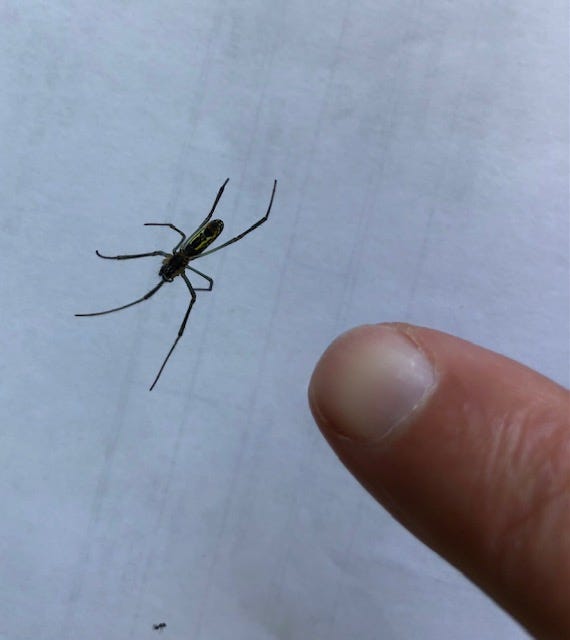This week’s question comes from a reader – let’s call him David (because that’s his name – also, he’s my father-in-law). David wonders:
I just caught one of the largest ground hogs I've ever caught or killed. She's the 4th one in two weeks. 25 pounds plus. Gigantic. Question: Where does the tunnel dirt go? How does their GPS work underground? There is no traffic signal at the ends of the burrow – is there a passing zone? Nothing would have gotten around "big mama ". In fact, I don't see how she even got through the burrow. Wow, wonder what happens in the burrow when Mr. Snake decides to travel that way?
I’ll have to admit, I didn’t understand the initial question until I pondered it for a bit. There’s dirt piled up outside groundhog burrows, right? So that’s where the dirt goes. But then I wondered – how big are those burrows? If they’re ten feet long, is there really ten feet worth of dirt piled up at the entrance? Are groundhogs stashing the dirt somewhere else? And why do some groundhogs have burrows with NO dirt outside at all?! Are these gifted groundhogs with magical properties?

Where does all the dirt from a groundhog tunnel go?
It took a good bit of research for me to realize that groundhogs simply have a sleight of hand situation going on here. They aren’t disappearing the dirt somewhere, or eating it, or alchemizing it into valuable minerals.

Groundhogs (also known as woodchucks, whistle pigs, and by their official name, Marmota monax) dig burrows that have multiple entrances. They dig with their sharp claws, then carry out the dirt with their mouths. Since burrows can end up being 40-60 feet long, observers estimate that can total up to 200-700 pounds (90-315 kilos) of dirt moved by mouth!
Only the main entrance has evidence of a dirt mound. Other entrances may be hidden in bushes or tree roots. Every den system also usually has a “plunge hole” that’s formed by digging from underground up to the surface, leaving no dirt above ground. These holes are for the rodent to “plunge” into at the first sign of danger.
If you happen upon one of these secondary entrances, you’d probably be surprised by the lack of dirt and think something weird is happening. But it just turns out the groundhogs cart all the dirt out to the one main entrance. Over time, the dirt mound will be covered up in leaves and grass and become less noticeable.

Groundhogs also attempt to make the dirt at the main entrance a tad less obvious by dispersing it as they dig. They push the dirt away from the hole using their bodies as a shovel. You can see that for a short bit in this video, which starts at the 50 second mark (ignore the weirdly inspirational soundtrack):
I also found that groundhogs are solitary creatures – only one groundhog will live in a burrow. Males will visit females during mating season, then return to their own underground home. This means there’s no need for a “passing zone” inside the burrow, though there is a spot to turn around just inside the main entrance, which you can see in the drawn illustration above.
If a groundhog dies, another may quickly move in, making it seem like perhaps there were multiple animals there all along. Some dens can be many years old and simply used and reused by many generations of groundhogs.
When groundhogs begin to hibernate, they crawl into a small section of their tunnel system and plug the entrance to that section with dirt to seal themselves off. Other animals take that as an invitation to move into the rest of the house – over the winter, groundhog burrows can be occupied by skunks, opossums, foxes, raccoons, weasels, wood mice, gray squirrels, jumping mice, chipmunks, meadow voles, shrews, house mice, pine voles, or several species of snakes.
One study I read from the late 1940s described the work of a few scientists as they worked one winter to study hibernating “woodchucks.” Nature conservation was obviously not much of a thing back then as they shoveled up tunnels, following one for 42 feet before it ended in the roots of a tree. They then got a tractor in order to dig up the tree to get to the very sleepy woodchuck below. In a massive understatement they note, “It is possible that our digging, the noise of the tractor, and the shock of having a tree jerked out from over its head may have aroused the animal” (p. 282).

Nowadays we’re much less intrusive, and instead send remote controlled vehicles into groundhog burrows with Go Pros attached:
In the video you can see lots of branches as the tunnel seems to divide several times, presumably going to different parts of the burrow. Groundhogs don’t appear to have much of a plan when they construct these – no real GPS system that allows a planned sort of layout – but they do seem to always have a bathroom chamber and also a nest chamber that’s usually closer to the surface than the other chambers to keep it dry from water runoff. At least, that’s what the scientists from the 40s found after digging up 39 burrows…
So, ultimately it appears that groundhogs (and other burrowing animals, for that matter) aren’t doing anything sneaky with the dirt from their dens. Some of it likely gets compressed into the floors of their tunnels while most of it ends up outside the main entrance in a mound. Dens that don’t have the mound of fresh soil may be well-established tunnel systems that were created years ago.

While many folks see them as pests, especially if they burrow under buildings or otherwise affect the foundations of human structures, groundhogs do aerate the soil with all their digging and their burrows provide much-needed habitats for many other animals over the winter months.
Weird Nature
I’ve moved away from Twitter and over to Threads (@HeatherWall250 ) so I’m still trying to find my Weird Nature people there. Meanwhile, we had our own weird nature happening:
Andrew found this apparent zombie bug on our porch last week. Around Halloween I wrote about what causes zombie bugs, but I honestly didn’t realize they could happen here. Nature is… weird.
Joro Update
If you’ve been a subscriber to Natural Wonders for a little while, you’re probably aware that I’m not a fan of Joro spiders - the invasive, palm-sized spiders that tend to land on my face while mountain biking. I’ve written about them before, but had hoped that the polar vortex this past winter might have killed back this invasive species.
No such luck.
They’re still here, they’re just really small right now. If you live in the Southeast, you’re likely in the same boat.
I’ve had readers ask about them, so thought I’d let you know they’re still around…









I have 2 groundhogs under my porch! They don’t like each other but tolerate each other & hear them squabble each other , 3 rd one must be underground in the woods I see it come over occasionally and eat with the other 2 and squirrels, birds , thought they were solitaire?
they are cute til they start digging into your garage, shed under your house and start doing damage. Then they are not so cute. And getting them to move on is an almost impossible job.